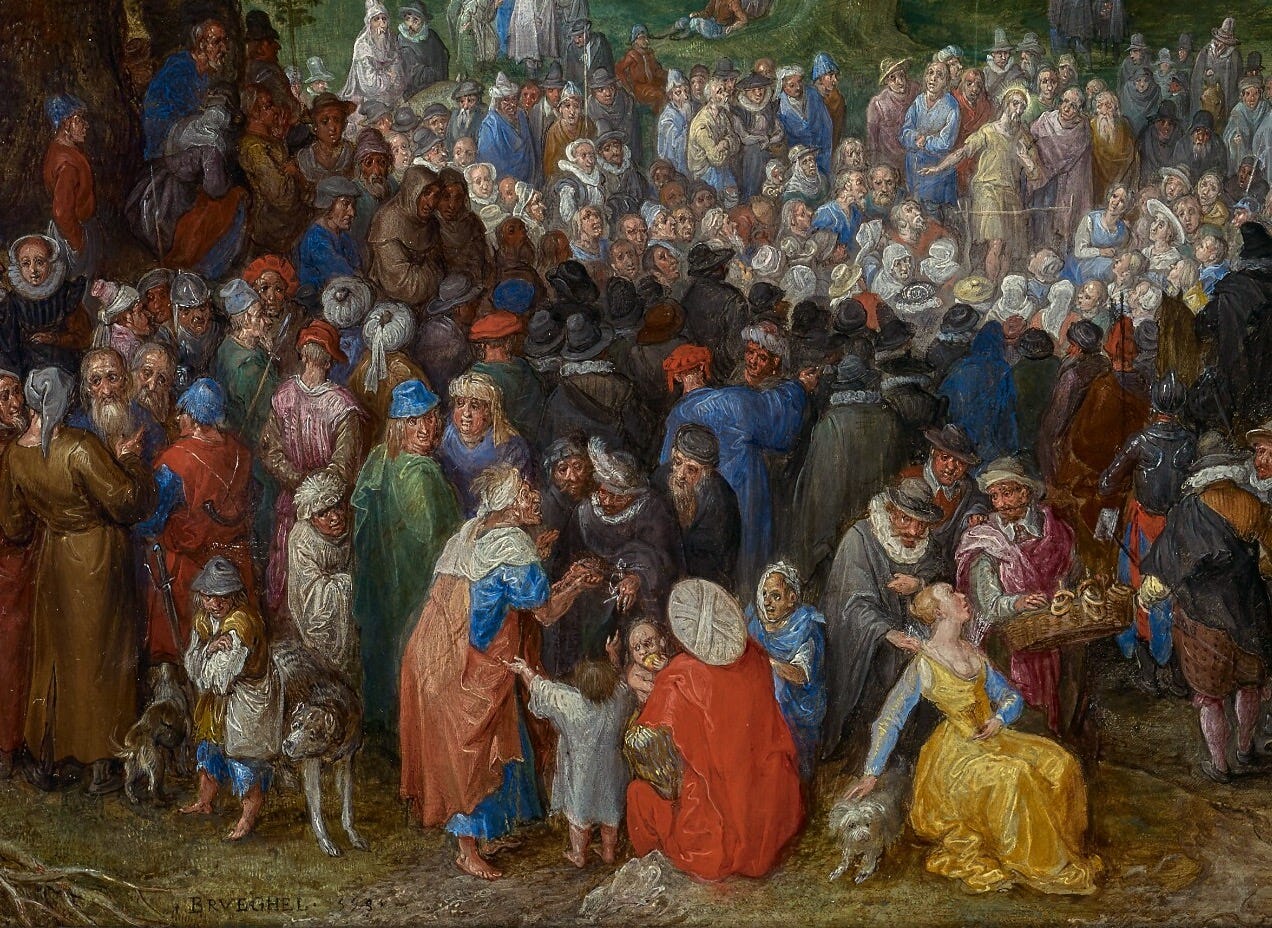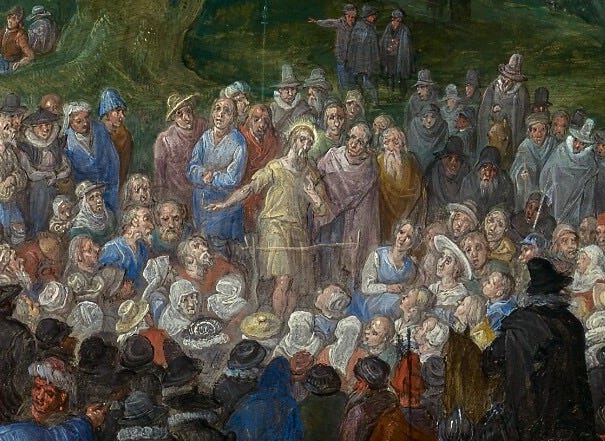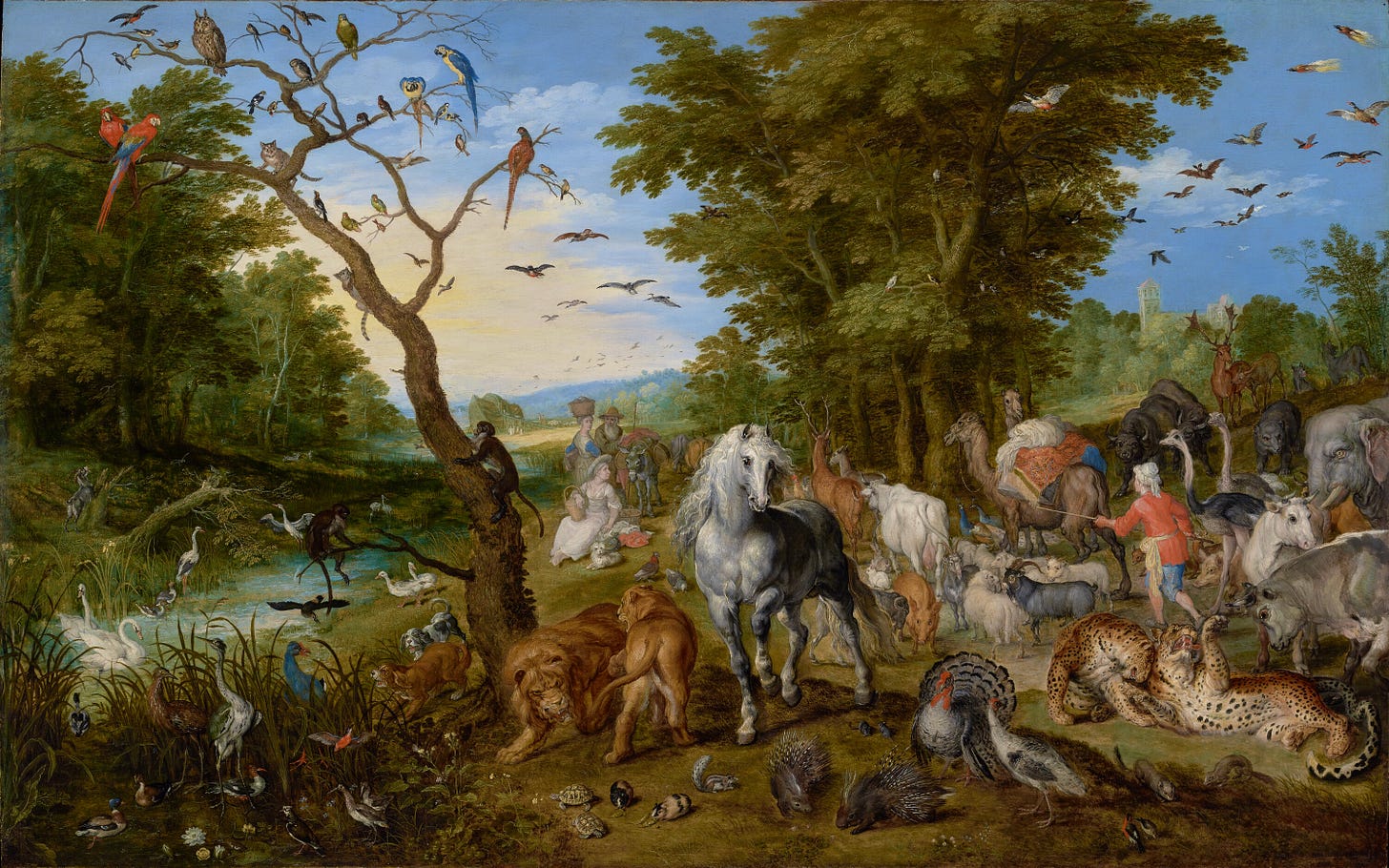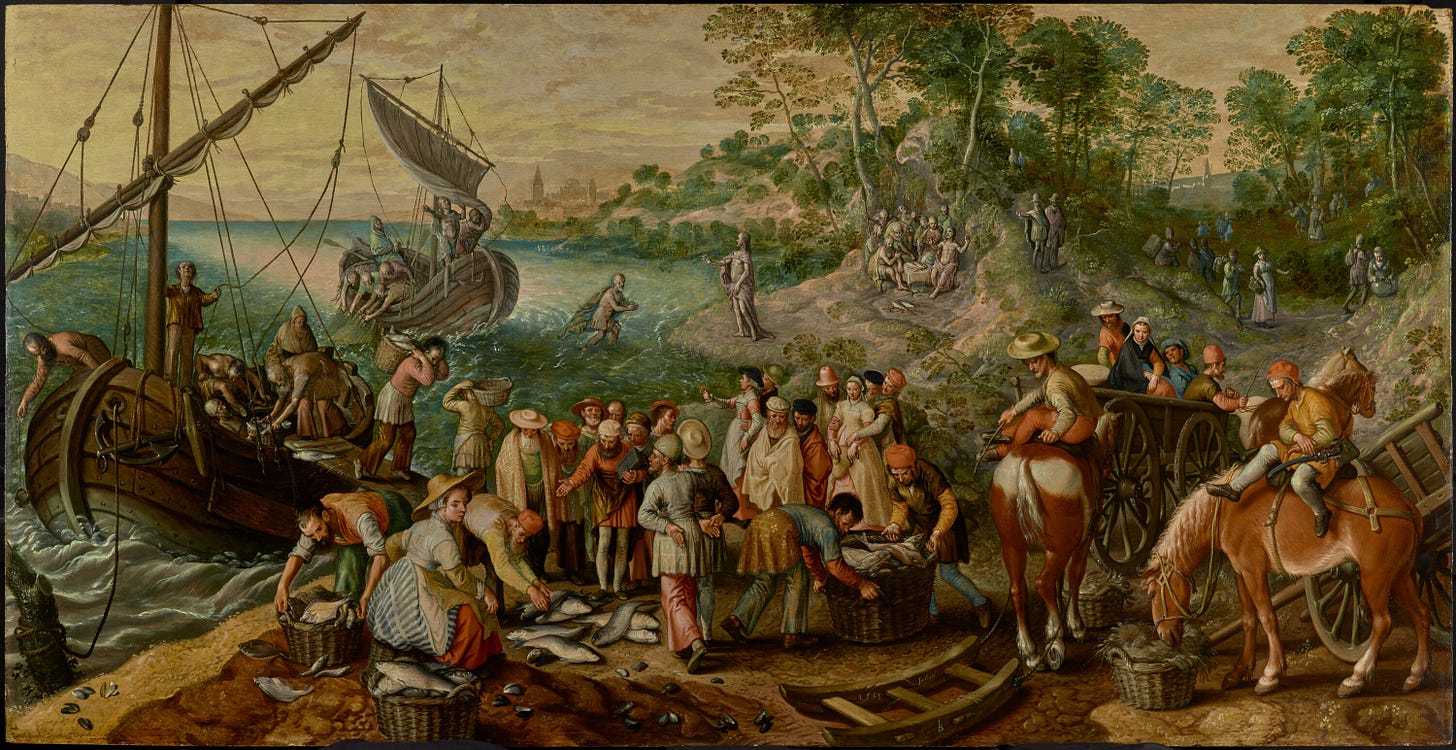Welcome to this week’s edition of Reading Art!
In the course of my research on the collected letters of Marcus Aurelius and his mentor/friend/teacher Fronto (more on them in a future newsletter), I became fascinated by the concept of the mise en abyme, which involves a work that has a smaller copy of an image within a larger one, or a text within a text, or the like. My study (forthcoming in Classical Quarterly at some point in the future) showed how many of the individual letters in the collection work as reflections of the greater whole of the letter collection. My love of the miniature didn’t start with Marcus and Fronto; the idea of the microcosm has always fascinated me, from tide pools to dollhouses. Even as my research has evolved to have a greater emphasis on the visual arts, I’m still intrigued by the tiny little details and the way I find something new every time I return to a given work.
When I was a docent at Getty during the lockdown era, I went to a virtual workshop called an “art break” with a brilliant gallery educator who focused the entire session on Jan Brueghel the Elder’s “Sermon on the Mount.” We went over the whole painting inch by inch, admiring the extreme level of detail:

What’s so funny about this piece is that, when you go to look at it in person (highly recommend), you realize it’s quite small, only 10.5 × 14.5 in. But when you’re looking at it online, it’s easy to imagine it as this massive canvas. The hundreds of figures each constitute his or her own little microcosm.
For example, if you focus your attention on the lower left, you see a lady who appears to be in a swoon, several dogs, a child asking to be picked up, and some men in an intense discussion. They’re living in their own little world, not even listening to the sermon—which happens to be delivered by none other than Jesus himself. And yet this important occasion fails to hold the attention of so much of the audience. In reality, it’s probably because they just can’t hear or see very well in the crowd. But there’s also the subtle implication that their own activities and socializing are almost (but never quite) equally worthy of our attention as Jesus’ sermon.

I love the way Brueghel has portrayed the light in this scene. Jesus, as we would expect, has a halo of gold, and his unassuming outfit also takes on a golden cast. This closest to him seem to share in this light as they look up at him:

Take a look at the lighting: the people in the middle are cast in the shadow of a large tree, and we can’t really see them too clearly. But if you look back up at the whole painting, you see that the outermost part of the crowd is also cast in light. The eye is drawn to them almost more than it is to Jesus.
Indeed, a microcosm is a miniature that reflects the greater whole. Is Brueghel hinting at some element of divinity even in the many and varied figures of the throng? Maybe the little dog by the fainting lady represents loyalty and faith. Maybe the toddler reaching up his arms is a reflection of the childlike wonder that a religious experiences demands.
I’m on a real Northern Renaissance kick in general lately. It feels like a nice way to balance out my work on antiquity as I edit my dissertation and get ready to file in the spring. The art of classical antiquity is beautiful and captivating, but I also love the rich colors and high level of detail and realism of early modern painting.
Take, for instance, another of Brueghel’s works in the Getty collection, “The Entry of the Animals into Noah’s Ark.” Flood stories don’t just come to us from the Hebrew Bible. In fact, nearly every culture has some kind of narrative that tells of the divine sending down a great flood to drown humanity so that the divine creator can start anew.
To be sure, the divine does not always choose a flood to thin the population. For example, in the mostly-lost Greek epic Cypria, it states that Earth became weighed down with the large population of humans, so Zeus decided to set in motion the events that would lead to the Trojan War. But oftentimes there’s a flood. In the Greek context, this would be the myth of Pyrrha and Deucalion. In the Epic of Gilgamesh, the chief god Enlil decides to send a flood because humans have become, of all things, too loud (facts). There are many other examples from antiquity as well.
What I find about these and the other flood myths is that the emphasis is so often on the human: how one or two lucky people evade their doom and how blessed they become by the gods/God afterwards. But I love how Brueghel has, once again, deemphasized the human and even the divine in this scene and put the focus squarely on the animals:

Maybe my favorite pair is the two parrots in the upper left, or maybe the two ostriches off to Noah’s right on the righthand side of the painting. There’s a lightheartedness to this particular microcosm: Noah himself looks a little stressed, trying to wrangle a camel, but the animals maintain the harmony and tranquility of the natural world. If they know of the trial to come, they are unbothered, have no need of rigorous preparation like the human does.
Indeed, Brueghel may have simply been more interested in the biodiversity of the animals than he was in the biblical subject of the painting. At this point in history, European exploration and conquest of the Americas throughout the sixteenth century had sparked much interest in natural history and geography. In the foreground are two turkeys, North American birds, and, also in the foreground, in between the porcupines and the turtles, are two guinea pigs, which are South American creatures. The inclusion of these “New World” species may also symbolize the fact that Noah too is going to find a new world of his own once the storm ceases. Once again, in this painting each pair of animals is the microcosm, which is in turn a miniaturization that reflects the greater whole. Here, nature’s creativity overcomes the turmoil of divine/human conflicts.
Finally, here’s a third example: Joachim Beuckalaer’s “The Miraculous Draught of Fishes,” which is a bit earlier chronologically speaking but has the same sense of being full of activity and movement:

Once again, as with many Northern Renaissance works, the theme is a religious one: when some fishermen, including Saint Peter and some other disciples, have an unsuccessful day of fishing, but then have a great catch after Jesus comes along and encourages them to try again. There are different smaller scenes combined into the one painting: for example, in the back, Saint P. wades through the water to get to Jesus, standing on the shore, alive and well post-Resurrection. Next to that, Jesus and his disciples sit around a fire, eating.
These microcosms are rendered in paler colors than the bright foreground, which is taken up by a scene of the fishermen excitedly looking over their miraculous catch. Again, we see an interesting contrast between the sublimity of the religious experience and the unexpected vibrance of an experience that is only seemingly more mundane: this is not just a materialistic and mundane depiction of commerce and trade, but a scene of people enjoying the results of a divine miracle.
Of course, as with “The Sermon on the Mount,” Jesus is hardly relegated to a minor role: in “The Miraculous Draught of Fishes,” after all, you have to lift your eyes to look at him and his disciples. But what I find so interesting here is the simultaneous separation and permeability between the realm of the human and the realm of the divine. This is the power of the microcosm: it exists in its own little world, but is never apart from the larger environment. Wherever you happen to look, the microcosm becomes all-consuming, like looking into a terrarium. The rest of the scene fades away, if only for the time being. And, ultimately, we see reflected in these works the joy of the artist’s creativity, so carefully rendering dozens of figures, each with their own little narrative within the painting.
Thank you for reading this week’s newsletter!
I love the way that looking closely at the fine details in a “close reading” of a work of art can lead to new interpretations. Doing this repeatedly over time can also lead to evolution in the way we perceive a given work. Thanks again for reading this week’s edition! Take care until next time.
MKA



